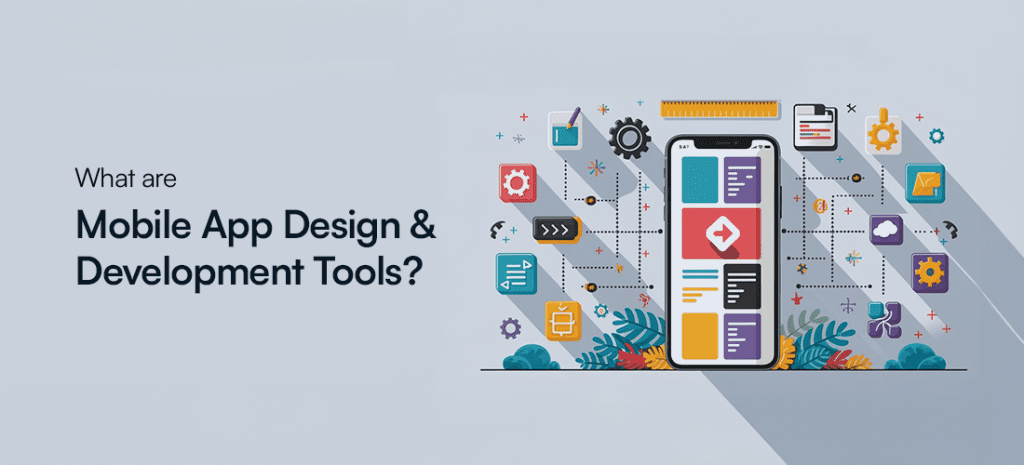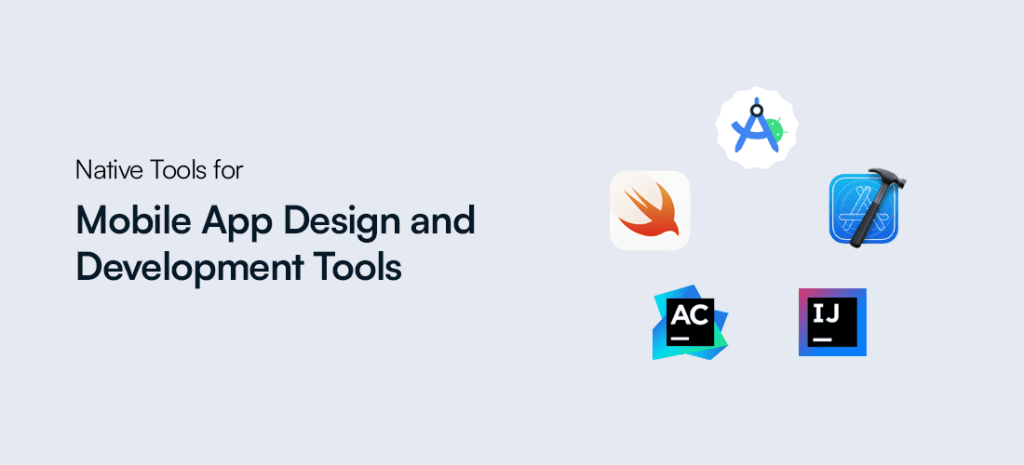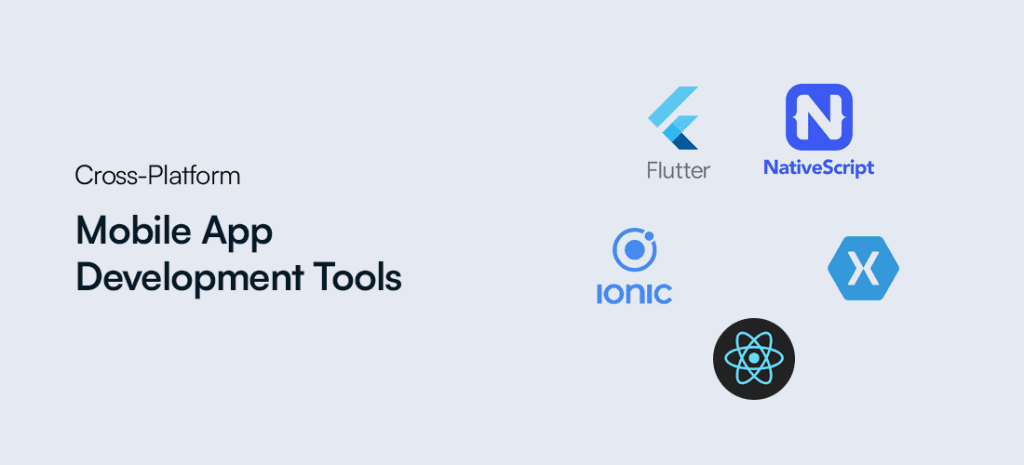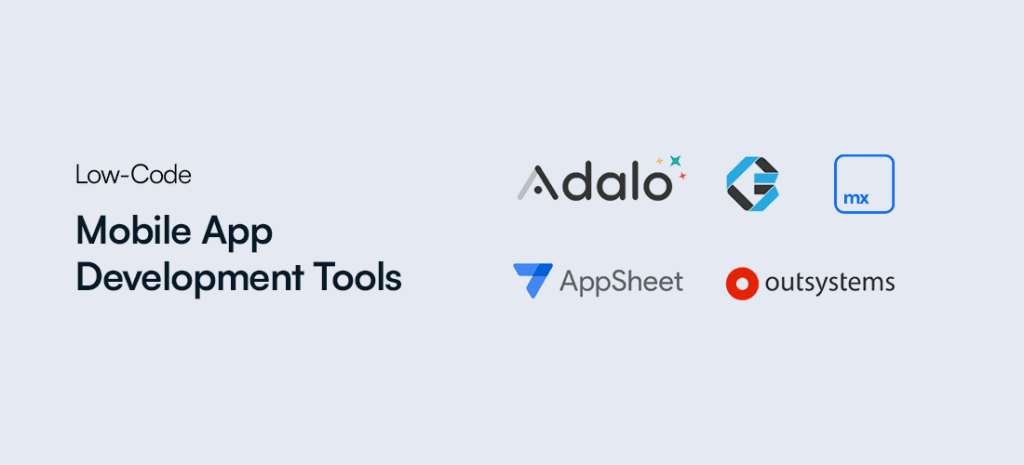Mobile applications have become indispensable tools that enhance our daily lives, streamline business operations, and entertain us. As mobile usage continues to skyrocket, the demand for high-quality mobile apps has never been greater. Whether you’re a seasoned developer or just starting, leveraging the right mobile app development tools can make a significant difference in the success of your app.
This comprehensive guide will explore the top mobile application design and development tools for building apps, covering everything from native and cross-platform solutions to low-code platforms and design tools. Understanding these tools will help streamline your workflow, improve app quality, and ensure a superior user experience.
What is Mobile App Development?
Mobile app development is the process of creating software applications that run on mobile devices, such as smartphones and tablets. It involves writing code, designing interfaces, and ensuring that the app performs well on various devices and operating systems. Mobile app development can be broken down into several stages:
- Planning: Defining the app’s purpose, target audience, and core functionalities.
- Design: Creating wireframes, mockups, and user interfaces that are intuitive and visually appealing.
- Development: Writing the code that powers the app, integrating back-end services, and implementing features.
- Testing: Conducting thorough testing to identify and fix bugs, ensuring the app works smoothly on different devices and OS versions.
- Deployment: Publishing the app to app stores like Google Play and the Apple App Store.
- Maintenance: Updating the app regularly to fix issues, add new features, and keep up with OS updates.
What is Mobile App Design?
Mobile app design is the process of creating the visual and interactive elements of a mobile app. It focuses on the user experience (UX) and user interface (UI), aiming to make the app not only functional but also intuitive and engaging. The key aspects of mobile app design include:
- User Interface (UI) Design: Crafting the layout, colors, typography, and overall visual elements of the app.
- User Experience (UX) Design: Ensuring the app is easy to use, with a logical flow and seamless interactions.
- Wireframing: Creating basic layouts to outline the structure and functionality of the app.
- Prototyping: Developing interactive models to test and refine the design before full-scale development.
- Visual Design: Finalizing the aesthetic elements to create a polished and cohesive look.
- Interaction Design: Designing interactive elements, such as buttons, animations, and transitions, to enhance user engagement.
What are Mobile App Design and Development Tools?

Mobile app design and development tools are software solutions that assist developers and designers in creating, testing, and deploying mobile apps. These tools provide various functionalities, such as coding environments, design interfaces, testing frameworks, and deployment services. The primary categories of mobile app design and development tools include:
- Native Development Tools: Tools designed specifically for building apps on a particular platform, such as Android or iOS.
- Cross-Platform Development Tools: Tools that allow developers to build apps that run on multiple platforms using a single codebase.
- Low-Code Development Tools: Platforms that enable rapid app development with minimal coding, often using visual interfaces.
- Design Tools: Software for creating UI/UX designs, wireframes, prototypes, and other visual elements.
Native Tools for Mobile App Design and Development Tools

Native tools are designed for building apps on a particular platform, such as Android or iOS. These tools provide access to platform-specific features and offer optimal performance. Here are some of the top native tools for mobile app design and development:
-
Android Studio
Android Studio is the official Integrated Development Environment (IDE) for Android development, provided by Google. It offers a comprehensive set of tools for building, testing, and debugging Android apps.
- Features:
- Code editor with syntax highlighting and code completion.
- Built-in emulator for testing apps on various Android devices.
- Integration with version control systems like Git.
- Support for Java, Kotlin, and C++ programming languages.
- Pros:
- Deep integration with Android platform features.
- Robust debugging and performance analysis tools.
- Extensive documentation and community support.
- Cons:
- It can be resource-intensive and slow on less powerful machines.
- Steeper learning curve for beginners.
-
Xcode
Xcode is the official IDE for iOS, macOS, watchOS, and tvOS development, provided by Apple. It includes everything needed to create apps for Apple’s ecosystem.
- Features:
- Swift and Objective-C programming languages support.
- Interface Builder for designing user interfaces visually.
- Integrated simulator for testing apps on different iOS devices.
- Comprehensive suite of debugging and performance tools.
- Pros:
- Seamless integration with Apple’s development ecosystem.
- High-quality tools for UI design and testing.
- Regular updates and strong support from Apple.
- Cons:
- Requires a macOS system to run.
- Can be complex and overwhelming for new developers.
-
Swift Playgrounds
Swift Playgrounds is an app for iPad and Mac that makes learning Swift interactive and fun. It’s a great tool for beginners to start building iOS apps and for developers to experiment with Swift code.
- Features:
- Interactive lessons and challenges.
- Real-time feedback as you code.
- Ability to control drones, robots, and other connected devices.
- Shareable playgrounds with integrated Swift code.
- Pros:
- Excellent for learning Swift and prototyping.
- Engaging and interactive interface.
- Free to use and backed by Apple.
- Cons:
- Limited to Swift programming and iOS development.
- Not a full-fledged IDE for complex projects.
-
JetBrains IntelliJ IDEA
IntelliJ IDEA is a powerful IDE for Java development that also supports Android development. It offers intelligent coding assistance, deep code insight, and a robust set of tools for Android developers.
- Features:
- Smart code completion and analysis.
- Integrated version control system support.
- Advanced refactoring and debugging tools.
- Support for Kotlin, Java, and Groovy languages.
- Pros:
- Highly efficient and productive development environment.
- Strong support for Android development.
- Extensive plugin ecosystem.
- Cons:
- Can be resource-intensive.
- Commercial product with a free community edition that has fewer features.
-
AppCode
AppCode is an IDE for iOS/macOS development by JetBrains. It provides a robust environment for developing applications with a focus on code quality and developer productivity.
- Features:
- Smart editor with code completion, refactoring, and navigation.
- Support for Objective-C, Swift, C++, and other languages.
- Integrated unit testing and debugging tools.
- Version control systems integration (Git, SVN, Mercurial, etc.).
- Pros:
- Enhances productivity with intelligent coding assistance.
- Supports multiple programming languages.
- Regular updates and extensive JetBrains ecosystem.
- Cons:
- Requires a macOS system to run.
- Commercial product with a free trial but no free version.
Cross-Platform Mobile App Development Tools

Cross-platform development tools enable developers to build apps that run on multiple platforms (e.g., Android, iOS) using a single codebase. These tools can save time and resources by allowing code reuse across different platforms.
-
Flutter
Flutter is an open-source UI software development kit (SDK) created by Google. It uses the Dart programming language and allows developers to build natively compiled applications for mobile, web, and desktop from a single codebase.
- Features:
- Rich set of pre-designed widgets.
- Hot Reload for real-time updates during development.
- Strong performance due to direct compilation to native code.
- Extensive community and plugin support.
- Pros:
- High performance and smooth animations.
- Unified development for multiple platforms.
- Rapid development with Hot Reload.
- Cons:
- Dart language may be unfamiliar to many developers.
- Larger app sizes compared to native solutions.
-
React Native
React Native is an open-source framework developed by Facebook for building mobile apps using JavaScript and React. It allows for the development of applications that work on both Android and iOS using a single codebase.
- Features:
- Reusable components across platforms.
- Fast Refresh for quick iteration cycles.
- Integration with native modules for accessing platform-specific features.
- Strong community and extensive library support.
- Pros:
- Efficient development with code reuse.
- Active community and frequent updates.
- Access to a vast ecosystem of libraries and tools.
- Cons:
- Performance can lag compared to fully native apps.
- Requires bridging for some native functionalities.
-
Xamarin
Xamarin is a Microsoft-owned framework that allows developers to build cross-platform apps using C# and .NET. It provides a single codebase for Android, iOS, and Windows apps.
- Features:
- Native API access through C#.
- Xamarin.Forms for shared UI code.
- Integrated with Visual Studio IDE.
- Comprehensive documentation and support.
- Pros:
- Strong integration with Microsoft’s ecosystem.
- Reusable code across multiple platforms.
- Access to native API features.
- Cons:
- Larger app sizes.
- Learning curve for developers unfamiliar with C#.
-
Ionic
Ionic is an open-source framework for building cross-platform mobile apps using web technologies like HTML, CSS, and JavaScript. It allows developers to create high-quality mobile, desktop, and progressive web apps.
- Features:
- Rich library of pre-designed UI components.
- Integration with Angular, React, and Vue.js.
- Powerful CLI for building, testing, and deploying apps.
- Native API access through Capacitor and Cordova plugins.
- Pros:
- Highly customizable and flexible.
- Strong community and extensive documentation.
- Efficient development process with reusable components.
- Cons:
- Performance may not match fully native apps.
- Requires web development knowledge.
-
NativeScript
NativeScript is an open-source framework for building native mobile apps using JavaScript, TypeScript, or Angular. It allows developers to write and deploy apps on iOS and Android from a single codebase.
- Features:
- Access to native APIs directly from JavaScript.
- Support for Angular and Vue.js frameworks.
- Rich set of native UI components.
- Hot Module Replacement for quick development cycles.
- Pros:
- True native performance with single codebase.
- Strong support for modern JavaScript frameworks.
- Active community and regular updates.
- Cons:
- Steeper learning curve compared to other frameworks.
- Limited third-party library support compared to web-based solutions.
Low-Code Mobile App Development Tools

Low-code development tools allow developers to create mobile apps with minimal coding, often using visual drag-and-drop interfaces. These tools are ideal for rapid development and for teams with limited programming expertise.
-
OutSystems
OutSystems is a leading low-code platform for developing, deploying, and managing enterprise-grade applications. It supports full-stack development and provides tools for both front-end and back-end development.
- Features:
- Visual development interface.
- Integration with various databases and APIs.
- Built-in security and scalability features.
- AI-powered development assistant.
- Pros:
- Rapid application development and deployment.
- High scalability and enterprise-grade security.
- Comprehensive support and documentation.
- Cons:
- Higher cost compared to other low-code platforms.
- May require additional training to maximize platform usage.
-
Appgyver
Appgyver is a no-code and low-code platform that allows users to create professional-grade apps with a visual interface. It caters to both non-developers and professional developers looking for rapid prototyping and deployment.
- Features:
- Drag-and-drop interface for UI design.
- Pre-built logic flows and components.
- Integration with REST APIs and third-party services.
- Multi-platform deployment support.
- Pros:
- User-friendly interface for non-developers.
- Quick prototyping and iteration.
- Cost-effective solution for small to medium-sized projects.
- Cons:
- Limited customization compared to full-code solutions.
- Some advanced features may require coding knowledge.
-
Mendix
Mendix is a comprehensive low-code platform designed for building enterprise-level applications. It supports both business and IT users, enabling collaboration and rapid development.
- Features:
- Visual modeling tools.
- Integration with various data sources and systems.
- Built-in collaboration and project management features.
- AI and machine learning integration.
- Pros:
- Facilitates collaboration between business and IT teams.
- Rapid development and deployment of complex applications.
- Strong support and extensive documentation.
- Cons:
- Pricing can be high for smaller businesses.
- May require some coding for advanced customization.
-
Adalo
Adalo is a no-code platform that allows users to build web and mobile apps without writing any code. It offers a visual interface and pre-built components to speed up the development process.
- Features:
- Drag-and-drop interface for building UI.
- Built-in database and API integration.
- Pre-built templates and components.
- Publishing to web, iOS, and Android platforms.
- Pros:
- User-friendly interface for non-developers.
- Rapid prototyping and deployment.
- Affordable pricing plans.
- Cons:
- Limited customization and scalability for complex projects.
- Performance may not match fully coded solutions.
-
AppSheet
AppSheet is a no-code development platform that allows users to build mobile apps directly from data sources like Google Sheets, Excel, and databases. It is ideal for creating data-driven applications.
- Features:
- Data-driven app creation from spreadsheets and databases.
- Customizable UI and workflows.
- Integration with various cloud services and APIs.
- Offline functionality and synchronization.
- Pros:
- Fast and easy to build data-driven apps.
- Strong integration with Google Workspace and other cloud services.
- Suitable for business and productivity apps.
- Cons:
- Limited design flexibility compared to traditional coding.
- Can become expensive for large-scale deployments.
Mobile App Design Tools

Mobile app design tools are essential for creating visually appealing and user-friendly interfaces. These tools help designers craft detailed wireframes, prototypes, and final designs.
-
Sketch
Sketch is a popular design tool for creating high-fidelity UI/UX designs. It is widely used by designers for its vector-based design capabilities and robust plugin ecosystem.
- Features:
- Vector editing and design tools.
- Symbols for reusable design components.
- Extensive plugin library for additional functionality.
- Collaboration features with Sketch Cloud.
- Pros:
- Intuitive and user-friendly interface.
- Powerful vector editing capabilities.
- Strong community and plugin support.
- Cons:
- Mac-only application.
- Requires additional tools for prototyping and collaboration.
-
Figma
Figma is a web-based design tool that offers real-time collaboration features. It is ideal for teams working on UI/UX design projects together.
- Features:
- Real-time collaboration and commenting.
- Vector editing and design tools.
- Prototyping and interactive design capabilities.
- Cross-platform support (web, macOS, Windows).
- Pros:
- Seamless collaboration for design teams.
- All-in-one design, prototyping, and collaboration tool.
- Accessible from any device with internet access.
- Cons:
- Limited offline capabilities.
- Subscription-based pricing can be costly for larger teams.
-
Adobe XD
Adobe XD is a powerful design and prototyping tool from Adobe. It integrates well with other Adobe Creative Cloud applications and offers robust features for UI/UX design.
- Features:
- Vector design and editing tools.
- Interactive prototyping and animation features.
- Integration with Adobe Creative Cloud.
- Collaboration and sharing capabilities.
- Pros:
- Smooth integration with other Adobe tools.
- Comprehensive design and prototyping features.
- Regular updates and strong community support.
- Cons:
- Learning curve for beginners.
- Subscription-based pricing.
-
InVision Studio
InVision Studio is a powerful design tool for creating interactive prototypes and high-fidelity UI designs. It offers advanced animation and collaboration features.
- Features:
- Vector-based design tools.
- Advanced animation and interaction capabilities.
- Collaboration and sharing features.
- Integration with InVision’s suite of tools.
- Pros:
- Powerful animation and prototyping features.
- Seamless collaboration and feedback.
- Comprehensive toolset for UI/UX design.
- Cons:
- Steeper learning curve.
- Performance can be slow with large projects.
How to Choose Mobile App Design and Development Tools
Choosing the right mobile app design and development tools is crucial for the success of your project. Here are some factors to consider when making your decision:
- Project Requirements:
- Determine the specific needs of your project, such as the target platforms (iOS, Android, or both), required features, and performance considerations.
- Team Expertise:
- Assess the skills and experience of your development team. Choose tools that match their expertise to ensure efficient development and reduce the learning curve.
- Budget:
- Consider your budget for development tools. Some tools may have high upfront costs or subscription fees, so it’s important to choose solutions that fit within your budget.
- Scalability:
- Ensure that the tools you choose can scale with your project as it grows. This includes the ability to handle increased user traffic, additional features, and future updates.
- Integration Capabilities:
- Look for tools that integrate well with other systems and services you use, such as databases, APIs, and third-party services.
- Support and Community:
- Choose tools that have strong community support and extensive documentation. This can be invaluable for troubleshooting issues and finding resources to help you with development.
- Usability and User Experience:
- Consider the usability of the tools themselves. Tools with intuitive interfaces and user-friendly features can significantly enhance productivity and streamline the development process.
Conclusion
Mobile app design and development is a complex and dynamic field that requires a combination of creativity, technical expertise, and the right tools. By leveraging the top mobile app development tools discussed in this guide, you can streamline your workflow, enhance app quality, and ensure a superior user experience.
From native development tools like Android Studio and Xcode to cross-platform solutions like Flutter and React Native, and low-code platforms like OutSystems and Mendix, there are tools to suit every need and skill level. Additionally, mobile app design tools like Sketch, Figma, and Adobe XD provide the essential capabilities to create visually stunning and user-friendly interfaces.






